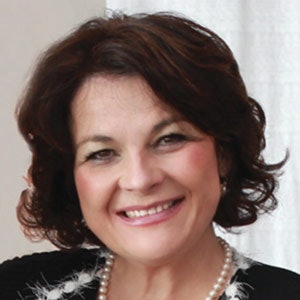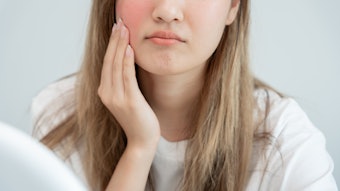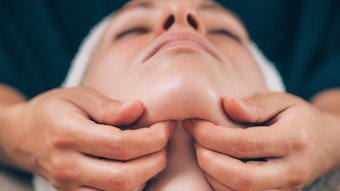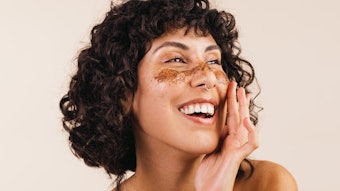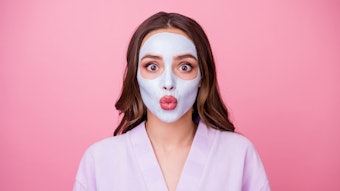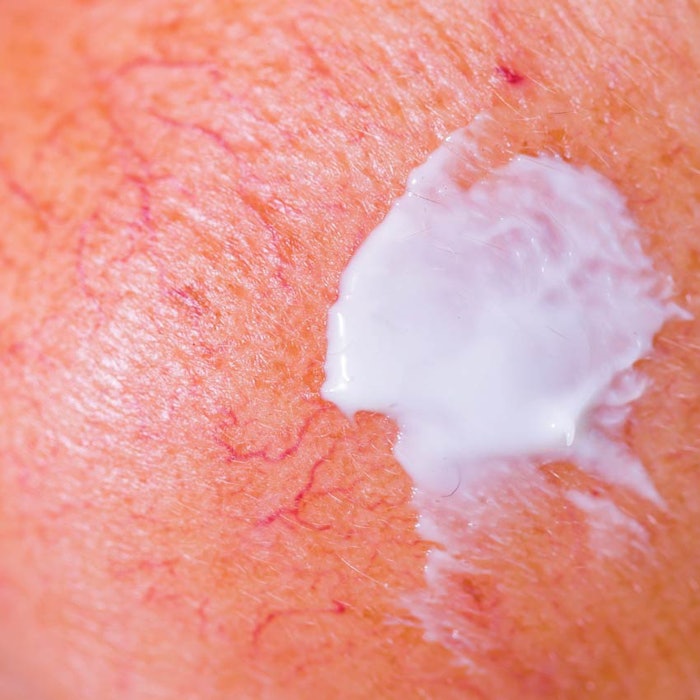
Rosacea is a disorder that affects an estimated 16 million people in the United States and 45 million people around the world. Often mistaken for acne (and mistreated as such), rosacea can cause tiny red pimples, dry skin and fine red lines. It has periodic flare-ups with symptoms that come and go. It is more frequent among women, yet more severe among men. It can worsen over time if left unchecked, resulting in rhinophyma—where the sebaceous glands in the nose and cheeks become enlarged and tissue builds up.
The unsightly blemishes, dryness, redness and skin disformity asssociated with rosacea can easily affect a sufferer’s quality of life, often negatively impacting their self-esteem. Many people report that the affliction has left them depressed and anxious.
As rich and powerful as he was, John Pierpont “J.P.” Morgan, was sensitive about his looks and hated to be photographed due to his rosacea. Cynthia Nixon, from the popular series, "Sex and the City," has also been vocal about her experience with rosacea.
Despite the huge number of people who have rosacea, most people have little knowledge of it.
Since many people do not understand rosacea, they often associate the red, blotchy skin with drinking. The good news for the many sufferers of the often embarrassing condition is that with proper, thoughtful medical attention and expert skin care, it can be managed and minimized.
Causes of Rosacea
The causes of rosacea are not fully understood. Although nothing has been conclusively proven through research, theories surrounding rosacea causes have ranged from autoimmune responses to bacteria, to a mite (demodex) that lives in high numbers on some rosacea sufferers, to a protein (cathelicidin) that usually protects the skin from infection.
The trouble is—virtually everyone is exposed to mites, bacteria and other possible causes. Why do only some people fall victim to rosacea?
Genetics
The answer could lie in genetics; it is clear that rosacea runs in families.
Ethnicity also seems to be a factor, as people of Irish, English, Scottish and Scandinavian heritage seem statistically more prone to get the condition. More generally, women, people with fair skin and those between 30 and 60 years-old are most likely to become sufferers.
Dietary Triggers
While causes are not clearly known, triggers of breakouts are well-documented. There is a long list of dietary no-nos, starting with alcohol. Note that while liquor is a trigger, it is not a cause of rosacea. Among alcoholic drinks, red wine, beer, bourbon, gin, vodka and champagne appear to be the biggest culprits. Dairy products, especially sour cream, yogurt and cheese, should be avoided. Chocolate, citrus fruits, spicy dishes and soy sauce are also known triggers. Even thermally hot food can provoke a reaction, and just say no to chopped liver!
Other Rosacea Triggers
There are other factors that can exacerbate the symptoms of rosacea, including extreme temperatures, intense exercise, sunlight, stress, anger or embarrassment. Some drugs, such as corticosteroids like prednisone, or compounds that dilate blood vessels such as blood pressure medications, can prompt an outbreak.
Signs and Symptoms of Rosacea
For an esthetician, nurse practitioner or other non-specialist healthcare provider, it is imperative to be sensitive to the symptoms of rosacea, as well as a client’s family history, lifestyle and medical conditions.
A typical diagnosis is based on red facial skin witheasy blushing, which may not be considered a problem by the sufferer. There are three stages of rosacea, including:
- Stage I: A breakout of red skin presents, where the sufferer complains of burning, itching skin that is particularly sensitive after application of the wrong cosmetics, suncreens or scents. Small red veins appear. Bumps and pimples may accompany the outbreak. Such breakouts last from hours to days.
- Stage II: Inflamed papules and pustules present, and the breakouts last for weeks. Pores become enlarged, and damage from the sun can cause distinct scarring. If the sufferer is bald, the pustules can extend into the scalp area. They often cover the neck, throat and behind the ears, even over the back.
- Stage III: Large, inflamed nodules on the cheek and nose present, and skin becomes swollen and rough with enlarged pores with an appearance that may be compared to the peel of an orange. The nose is often one of the first and most prominent areas affected, as noted above when discussing the rhinophyma.
Rosacea often also involves the eyes. The problem can begin with the eyes and is another often misdiagnosed problem. Symptoms include dry, irritated, swollen and red eyelids, conjunctivitis and inflammation of the cornea and iris.
Lifestyle and Drug Recommendations
While there is no cure for rosacea, modern medicine has developed effective treatments once a proper diagnosis has been given. With changes to diet, lifestyle, and appropriate skin care, outbreaks can be reduced and kept to a minimum.
Depending on the patient, dermatologists can prescribe a wide variety of remedies such as the oral antibiotics tetracycline or erythromycin. Often a physician will keep patients on a low-dose regimen for long periods of time. As for topical remedies, doctors frequently prescribe metronidazole or sulfacetamide lotion. For severe cases involving rhinophyma, interventions can involve laser surgery and other advanced techniques.
In all cases, people afflicted with rosacea should be counseled to take care of themselves. In addition to avoiding certain foods, sufferers should wear broad-spectrum sunscreen, and protect their faces with scarves or masks during the winter. They should try to remain hydrated and examine their lifestyles for triggers. Ultimately, they should try to reduce the stress as much as possible. The National Rosacea Society surveyed more than 1,200 people afflicted with the condition, and 96% they were able to minimize flare-ups after reducing the factors that contributed to personal triggers.
Skin Care Treatments: First, Do No Harm
With such a sensitive condition, how should an esthetician proceed? Obviously, an esthetician should be on the lookout for any evidence of rosacea and take special care not to introduce any products that might aggravate the condition.
Estheticians should only use gentle cleansers that contain only mild cleansing agents with no abrasives or irritants. Avoid any that contain irritants such as alcohol and fragrances.
Other irritants can include:
- Witch hazel;
- Peppermint;
- Eucalyptus oil; and
- Menthol.
Cleansing should be performed with the fingertips or an ultra soft pad, and skin should be rinsed thoroughly, but gently with lukewarm water. The moisture can be blotted dry with a soft towel, or allowed to air dry.
A toner can be used after cleansing to soothe and tone the skin. A protective day cream can follow the toner, but one must be chosen that is both mild and moisturizing, yet protects skin effectively from the sun. It should be applied only after any topical medications the client uses have had a chance to be fully absorbed into the skin.
Clients and estheticians are advised to test any product for the first time on a small area on the periphery and wait for any adverse reactions before proceeding.
Natural Remedies
For those wishing to avoid products altogether, there is one remedy that is simple to prepare and administer—the turmeric mask, made with equal parts turmeric, raw honey and organic milk or yogurt. After washing the skin with a mild cleanser, apply the mixture and leave on for approximately 20 minutes.
Turmeric is known for its anti-inflammatory properties, making it useful where inflammation has left reddened skin on the cheeks and nose and dark circles under the eyes.
Finding Support
To combat the embarrassment of unavoidable outbreaks, sufferers may want to consider joining support groups, some of them online, or seeking help from a counselor or therapist. A wisely run salon may want to remain abreast of the latest developments in dermatology, from drugs to surgeries and holistic remedies.
Remember, the more estheticians and healthcare providers know about rosacea, the more understanding and helpful they can be to someone who suffers from the condition. That help and understanding will keep the person coming back for years to come.
